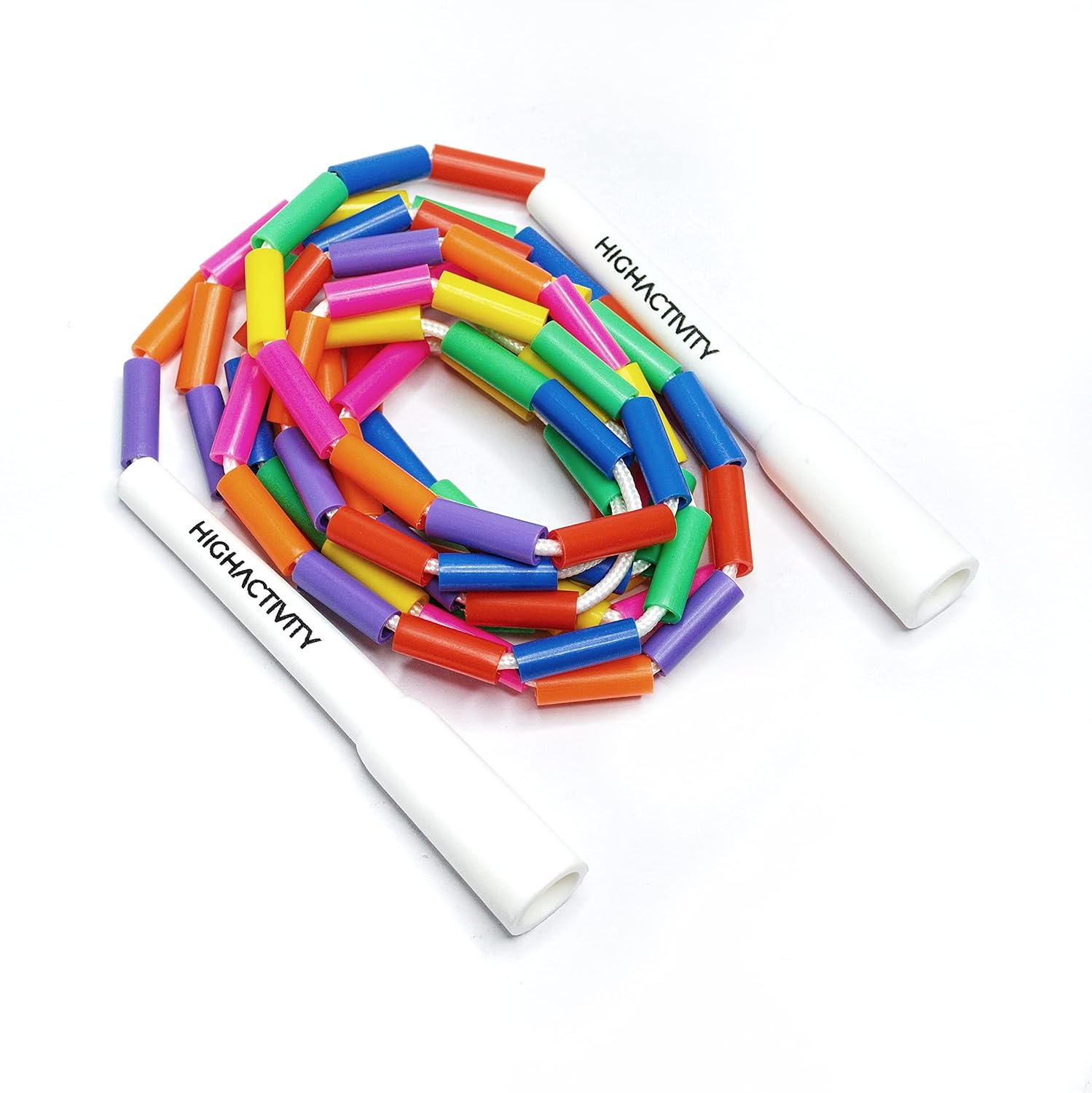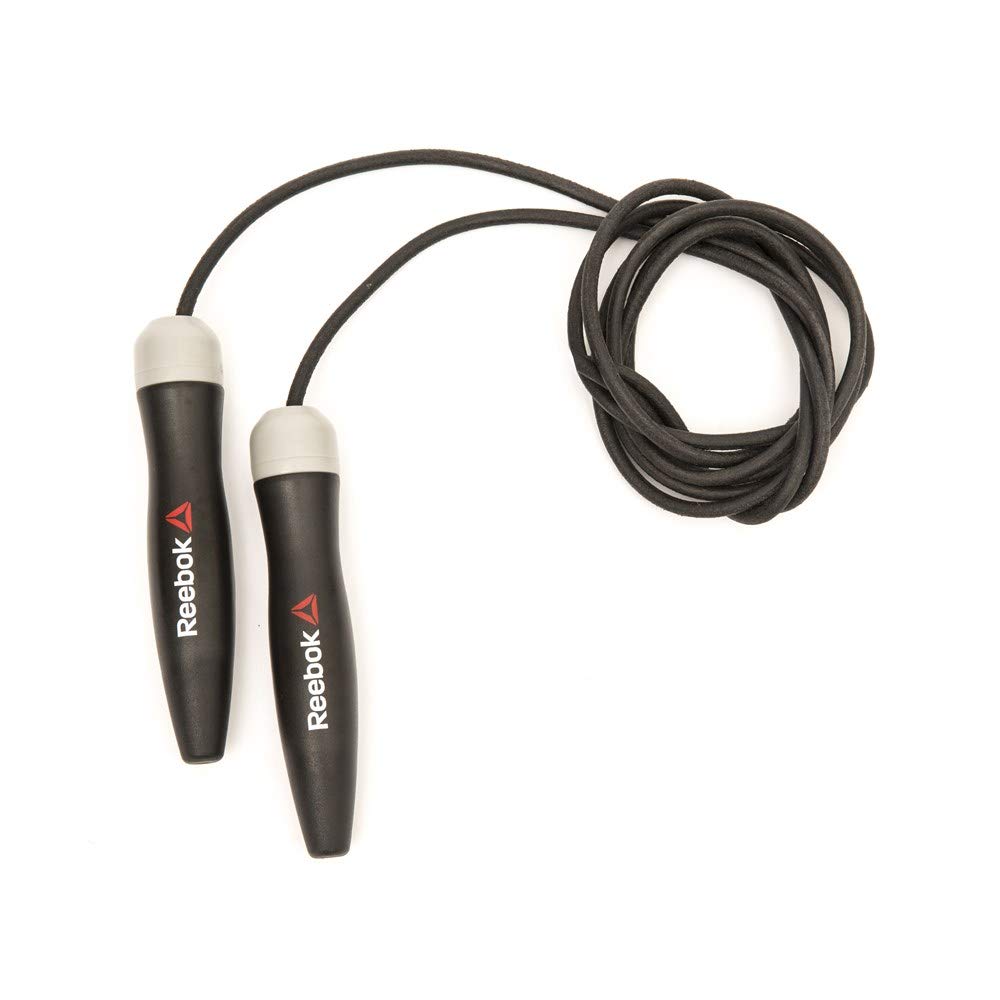
Jumping Rope for Weight Loss: A Comprehensive Guide to a Healthy Lifestyle
Introduction
The introduction section of our guide provides a comprehensive understanding of the benefits of jumping rope for weight loss and the science behind it. Let’s delve into more detail.
Understanding the Benefits of Jumping Rope for Weight Loss
Jumping rope is an excellent cardiovascular exercise that can burn a significant amount of calories, making it an effective tool for weight loss. The benefits of this simple yet powerful exercise extend beyond just burning calories. It also helps to tone muscles, particularly in the lower body and core. Moreover, it improves heart health, enhances coordination, and boosts endurance.
Calorie Burning: Jumping rope can burn approximately 10-16 calories per minute, making it one of the most efficient calorie-burning exercises. This can translate into substantial weight loss over time, particularly when combined with a balanced diet.
Muscle Toning: The nature of the jump rope exercise engages numerous muscle groups at once, including the calves, thighs, glutes, and core. This full-body workout leads to improved muscle tone and definition.
Cardiovascular Health: Jumping rope elevates the heart rate quickly, providing an excellent cardiovascular workout. Regular activity can help improve heart health and reduce the risk of cardiovascular diseases.
Coordination and Endurance: Jumping rope requires and builds both coordination and endurance. Over time, regular practice can result in improved athletic performance and overall fitness levels.
The Science Behind Jump Rope and Weight Loss
The science behind jumping rope and weight loss lies in the concept of creating a calorie deficit. To lose weight, you must burn more calories than you consume. Jumping rope aids in creating this deficit due to its high calorie-burning potential.
Moreover, jumping rope is a form of High-Intensity Interval Training (HIIT), which has been shown to be particularly effective for fat burning. During a HIIT workout, your body alternates between periods of intense effort and short recovery breaks. This pattern causes your heart rate to spike and then come down repeatedly, which can increase your metabolic rate and continue to burn calories even after the workout is over, a phenomenon known as the “afterburn effect”.
Additionally, jumping rope can help build lean muscle mass. Muscle tissue burns more calories than fat, even at rest. Therefore, increasing muscle mass can boost metabolism and further support weight loss.
In conclusion, the combination of high-calorie burning, the afterburn effect, and muscle building makes jumping rope a potent tool for weight loss.
Choosing the Right Jump Rope
Choosing the right jump rope is crucial to your workout experience and the results you hope to achieve. There are several factors to consider, including the type of rope, the length, the handle material, and the weight.
Types of Jump Ropes
There are four main types of jump ropes: speed ropes, weighted ropes, beaded ropes, and leather ropes.
Speed Ropes: These are lightweight ropes made from PVC or vinyl. They are designed for speed and agility workouts and are perfect for performing complex moves and double under.
Adjustable Skipping Rope for Men, Women & Kids – Speed Jump Rope

- Speed & Precision – Our Adjustable Skipping Rope is precisely engineered for fast spins and cuts through the air with the slightest flick of the wrist. With balanced weight distribution, you can manipulate and control the rope with precision.
- Adjustable Snap-Lock – Easily adjust your skipping rope’s length to suit any user! Our snap-lock feature makes adjusting quick and easy; just slide it to your desired length and trim off any excess cord.
- Grip Points – With a range of grip points, you’ll have pinpoint accuracy, fingertip control, and better traction for your workout sessions!
- Ergonomic Handles – Enjoy comfortable workouts with our sleek, lightweight handles designed for easy gripping. They’re made from high-quality materials that will bend and flex but won’t shatter. Anti-slip technology ensures a firm grip.
Weighted Ropes: These ropes have added weight in the handles, the rope itself, or both. They provide a more intense workout, increasing calorie burn and muscle engagement.
Weighted Skipping Ropes with Interchangeable Ropes

- Interchangeable ropes – Say goodbye to sub-par hand and wrist grip with our customizable skipping ropes. Available in 3 sizes-2.45m, 2.60m, and 2.75m-you’ll find the perfect length that fits your height for maximum effect during your workouts.
- Sturdy 22mm handle – Our handles are made of ABS plastic which is robust and sturdy enough to withstand long and intense sessions without wear or tear. The ergonomic design helps you achieve superior hand & wrist grip.
- High speed bearing – Our bearings are built for durability and reliability, allowing you to jump at high speeds with minimal effort while also maximising your training session’s efficiency.
- Slip pin for easy interchange of ropes – You can easily switch between different rope lengths depending on what workout or skill level you want to achieve. Just pop out the slip pin mechanism quickly and safely for fast rope changes without having to waste time!
Beaded Ropes: These ropes are covered with nylon beads. They are durable and maintain their shape well, making them suitable for beginners.
High Activity-Beaded Skipping Rope

- Ergonomic handles – Designed with your comfort in mind, feature a perfect length and firm grip, minimizing hand fatigue even after extended workouts. Shatterproof to ensure reliable support for intense training sessions.
- Premium materials – Sturdy construction guarantees durable use when working on your fitness goals. Beads securely fastened to the rope, staying in place even during vigorous exercises.
- Adjustable Length – Suitable for all ages and heights; customize fit with adjustable length and secure knot for a comfortable workout experience.
- Convenient storage bag – Easily transport and store when not in use; take it with you wherever you are working out—gym, park, or home!
- Long handle included – Free long handle with grip wrings moulded allows flexibility to use according to your style and needs.
Leather Ropes: These are heavier than speed ropes and offer a slower, more controlled rotation. They are ideal for endurance training.
Reebok RSRP-16080 Leather Skipping Rope

- 271 cm leather rope – Experience the smoothness that comes with a 271 cm long leather skipping rope. With extended length, it allows for comfortable jumping at different heights and angles without getting tangled.
- 90 g steel core in each handle – Enjoy extra convenience during your jump-rope workouts with ergonomically designed handles each containing a 90 g steel core for better grip while you work out.
- Ergonomically designed – For maximum comfort when you exercise, Reebok RSRP-16080 features an ergonomic design that fits snugly into your hands and reduces stress on your wrists.
- In-Box Contents: 1 x Skipping Rope – Get all you need for a great skipping workout in one box! The Reebok RSRP-16080 comes with a leather skipping rope and two handles with steel cores for reliable grip every time.
Length of the Jump Rope
The length of the jump rope should correspond to your height. When you step on the middle of the rope and pull the handles up, they should reach your armpits. If the rope is too long, it may tangle in your feet; if it’s too short, it may hit your head.
Handle Material
The material of the handle can affect grip comfort and control. Foam handles are comfortable and provide a good grip but may not be as durable. Plastic handles are durable and easy to clean but can become slippery when sweaty. Wooden handles offer a firm grip and are durable but can be more expensive.
Weight of the Jump Rope
The weight of the jump rope affects the intensity of the workout. A heavier rope will give you a more intense workout, engaging more muscle groups. A lighter rope is easier to control and is better for speed and agility workouts.
In conclusion, choosing the right jump rope depends on your fitness level, your goals, and personal preference. Experiment with different types of ropes to find the one that suits you best.
Preparation
Before starting your jump rope workouts, it’s crucial to prepare both your body and your mind to ensure a safe and effective exercise routine.
Warming Up and Stretching
Warming up before you start jumping rope is vital for several reasons. Firstly, it gradually increases your heart rate and circulation, warming up your muscles. Secondly, it helps to reduce muscle stiffness, which can decrease your risk of injuries and improve your performance.
A good warm-up might include five minutes of light cardio, like jogging in place or doing jumping jacks, followed by dynamic stretches that involve movement, such as leg swings, arm circles, and hip circles.
Stretching after your workout is equally important. Post-workout or static stretching helps to relax your muscles, return them to their resting length, and improve flexibility. This type of stretching involves holding a stretch for 15-30 seconds at a time, focusing on your calves, quadriceps, hamstrings, and glutes, which are the primary muscles used when jumping rope.
Setting Your Weight Loss Goals
Before you begin your jump rope routine, it’s also important to set clear, realistic goals for your weight loss journey. Setting goals can provide motivation and help you track your progress.
When setting your goals, consider using the SMART framework, making your goals Specific, Measurable, Achievable, Relevant, and Time-bound. For example, instead of saying “I want to lose weight,” you might say, “I want to lose 10 pounds in two months by jumping rope for 20 minutes every day.”
Remember, healthy weight loss is typically around 1-2 pounds per week, according to the Centers for Disease Control and Prevention. Losing weight too quickly can lead to muscle loss and other health problems.
Also, keep in mind that weight loss isn’t just about the number on the scale. It’s also about improving your overall health and fitness. Consider setting goals related to performance (like being able to jump rope for a certain length of time or doing a certain number of jumps) as well as aesthetic goals.
In conclusion, preparing to jump rope for weight loss involves warming up and stretching your body to prevent injury and setting SMART goals to keep you motivated and on track.
Jumping Techniques and Workouts
Learning proper jumping techniques and incorporating varied workouts can make your jump rope sessions more effective and enjoyable. Let’s discuss some common techniques and workout routines.
Jumping Techniques
Basic Jump: This is the most straightforward technique where you jump over the rope with both feet together. Keep your jumps low, just enough to clear the rope.
Alternate Foot Jump: Also known as “running in place,” this technique involves alternately lifting your knees while the rope passes under each foot separately. It’s a faster pace than the basic jump and can increase the intensity of your workout.
Double Under: This advanced technique involves making two rotations of the rope for every jump. It requires good timing, speed, and power.
Cross Over: In this technique, you cross your arms at the elbows on the downward swing of the rope, creating a loop that you then jump through.
Remember, form is important when jumping rope. Keep your body upright, look straight ahead, and use your wrists (not your arms) to turn the rope. Land softly on the balls of your feet to minimize impact on your joints.
Jump Rope Workouts
Beginner Workout: Start with a simple 10-minute workout. Do 30 seconds of basic jumps, rest for 30 seconds, then repeat until you reach 10 minutes. As your fitness improves, increase the jumping time and decrease the rest time.
HIIT Workout: High-intensity interval training (HIIT) involves short bursts of intense exercise followed by recovery periods. For example, do 20 seconds of alternate foot jumps as fast as you can, then rest for 40 seconds. Repeat for 10-20 minutes.
Endurance Workout: Try to jump for a longer period without stopping. Start with a goal of jumping for 5 minutes without a break. Gradually increase your time as your endurance improves.
Circuit Training: Combine jump rope with bodyweight exercises for a full-body workout. For example, do 1 minute of jumping rope, then 1 minute each of push-ups, squats, and sit-ups. Rest for 1 minute, then repeat the circuit.
By mastering different jumping techniques and incorporating varied workouts, you can keep your jump rope sessions fun and challenging, which will help you stay motivated on your weight loss journey.
Monitoring Your Progress
Tracking your progress is an essential part of any fitness journey, including a jump rope workout regimen for weight loss. It helps maintain motivation, provides feedback on your performance, and enables you to adjust your workouts as necessary.
Tracking Weight Loss
One of the most apparent indicators of progress in a weight loss journey is the change in your body weight. Regularly weigh yourself at the same time each day (preferably in the morning) to monitor changes. However, remember that body weight can fluctuate based on factors like hydration levels and food intake, so don’t be discouraged by minor ups and downs.
Measuring Fitness Improvements
While weight loss is a common goal, it’s also important to track improvements in your fitness levels. You could monitor how long you can jump rope without stopping, how quickly you can complete a certain number of jumps, or how many double unders or other advanced moves you can perform. Seeing improvement in these areas can be incredibly motivating, even if the scale isn’t moving as quickly as you’d like.
Body Measurements
Taking body measurements can provide a more complete picture of your progress than weight alone. Measure areas like your waist, hips, thighs, and arms. As you get fitter and start losing fat, you may see inches coming off even if your weight stays the same due to muscle gain.
Progress Photos
Visual evidence of progress can be very motivating. Consider taking progress photos in the same clothing and under the same conditions every few weeks. Over time, you’ll likely see physical changes that reflect your hard work.
Recording Your Workouts
Keep a workout log to track what you’re doing in each session, including how long you jumped, what techniques you used, and how you felt during and after the workout. This record can help you see your progress over time, understand what works best for you, and plan future workouts.
In conclusion, monitoring your progress in a structured and consistent way can provide valuable feedback, boost your motivation, and help you get the most out of your jump rope workouts. Remember to celebrate all improvements, whether they’re related to weight loss, fitness, or skill level!
Safety Measures and Injury Prevention
While jump rope is a low-risk activity compared to many other forms of exercise, there are still potential risks of injury. Here’s how you can minimize those risks and stay safe while jumping rope.
Proper Footwear
Wearing the right shoes is crucial for jump rope workouts. Choose a pair that provides good cushioning to absorb the impact each time you land and support your feet and ankles. Cross-training shoes are often a good choice.
Soft Landing Surface
Avoid jumping on hard surfaces like concrete, which can increase the impact on your joints. Instead, opt for softer surfaces such as a gym mat, carpet, or grass.
Correct Rope Length
Using a rope that’s too long or too short can lead to tripping or awkward jumping styles that could cause injury. Stand on the middle of the rope with one foot and pull the handles up – they should reach roughly to your armpits.
Warm Up and Cool Down
As mentioned earlier, warming up your body before starting the workout and cooling down afterwards is essential. It prepares your muscles and joints for the activity and helps to prevent injuries.
Gradual Progression
Don’t rush into advanced techniques or long workouts if you’re new to jump rope. Start with basic jumps and short sessions, then gradually increase the intensity and duration of your workouts as your fitness improves.
Regular Breaks
Taking regular breaks during your workouts can help to prevent overuse injuries. It’s better to have short, frequent workouts than long, infrequent ones.
Listen to Your Body
Finally, always listen to your body. If you feel pain during or after jumping rope, stop and rest. If the pain continues, consult a healthcare professional.
By following these safety measures and focusing on injury prevention, you can ensure that your jump rope workouts are not only effective for weight loss but also safe and sustainable in the long term.
Beyond Jumping Rope
While jumping rope is a fantastic workout, it’s important to remember that achieving and maintaining weight loss involves more than just one form of exercise. Here are some additional considerations to help maximize your results and maintain a healthy lifestyle.
Diversify Your Workouts
Incorporating other forms of exercise can help you avoid plateaus, reduce the risk of overuse injuries, and keep your workouts interesting. Consider adding strength training to build muscle and boost metabolism, aerobic activities like running or swimming for cardiovascular health, and flexibility exercises like yoga for balance and injury prevention.
Nutrition
No matter how much you exercise, you won’t see the results you want if you’re not also mindful of your nutrition. Aim for a balanced diet rich in fruits, vegetables, lean proteins, and whole grains. Avoid excessive intake of processed foods, sugary drinks, and unhealthy fats. If necessary, consider consulting with a registered dietitian or nutritionist to create a meal plan that suits your individual needs.
Rest and Recovery
Rest days are crucial for your body to repair and strengthen itself. Overtraining can lead to injuries and hinder your progress. Make sure to schedule at least one rest day per week, and listen to your body’s signals for when it needs more recovery time.
Mental Health and Mindset
Maintaining a positive mindset and good mental health is just as important as physical health in a weight loss journey. Find ways to manage stress, such as meditation or mindfulness practices, and maintain a supportive network of friends or family who can encourage you in your fitness goals.
Regular Check-ups
Regular medical check-ups can help detect any potential health issues early and ensure that your workout routine and diet are appropriate for your health status. Always consult with a healthcare professional before starting a new fitness program or making significant changes to your diet.
In conclusion, while jumping rope is a powerful tool for weight loss and fitness, it’s just one part of a comprehensive approach to health and wellness. By incorporating diverse workouts, focusing on nutrition, prioritizing rest and recovery, maintaining mental health, and keeping up with regular health check-ups, you can enhance your weight loss results and lead a healthier, happier life.
Conclusion
Jumping rope is a highly effective exercise for weight loss, offering a combination of cardiovascular and strength training that can help you burn calories, build muscle, and improve your overall fitness. It’s a versatile, low-cost, and fun workout that you can do almost anywhere, making it a great choice for anyone looking to shed some pounds.
However, as we’ve discussed, it’s important to approach jump rope workouts with the right mindset and preparation. This includes understanding the benefits and potential challenges, setting realistic goals, warming up and cooling down properly, choosing the right equipment, monitoring your progress, taking necessary safety measures, and looking beyond just jumping rope to other aspects of a healthy lifestyle.
Incorporating jump rope into a balanced routine of diverse workouts, healthy nutrition, adequate rest and recovery, positive mindset, and regular health check-ups can help you achieve and maintain your weight loss goals. Remember to listen to your body, celebrate your progress, and most importantly, enjoy the journey!
In conclusion, while jumping rope can be a powerful tool in your weight loss arsenal, it’s part of the bigger picture. Embrace the process, remain consistent, and you’ll likely see the results you’re striving for. As with any fitness regimen, it’s not about quick fixes but sustainable, long-term changes towards a healthier lifestyle. Enjoy the journey, and remember – every jump counts!
